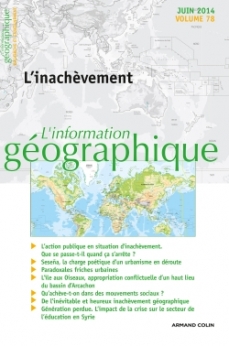
L'information géographique - Vol. 78 (2/2014)
Pour acheter ce numéro, contactez-nous
Recevez les numéros de l'année en cours et accédez à l'intégralité des articles en ligne.
Une grave crise immobilière a figé, depuis 2008, l’activité de construction dans les périphéries métropolitaines d’Espagne, donnant de nombreux quartiers une image d’inachèvement durable. L’article explicite d’abord les mécanismes de cette crise et la manière dont elle est vécue par les Espagnols. Il étudie ensuite l’évolution des regards portant sur un programme interrompu de grands ensembles situé au sud-est de Madrid, El Quiñon Seseña, qui a été transformé en symbole national de l’échec d’un modèle de développement. L’article propose une interprétation de la notion d’inachèvement urbain associée à une vision fantasmatique de la crise.
Since 2008, a housing crisis has stopped almost all construction activity in the metropolitan peripheries of Spain, leaving many neighbourhoods unfinished. Firstly, the article explains the mechanisms of the crisis and how it is experienced by the Spaniards. Then, it analyses the social perception of a large urban project located southeast of Madrid, El Quiñon Seseña, which was transformed into a national symbol of the failure of a development model. Therefore, the article proposes an interpretation of the concept of urban associated with a fantastical vision of the incompleteness associated with a fantastical vision of the crisis. This vision is based on the idea of a very recent and prosperous past, but nevertheless gone and now inaccessible.

